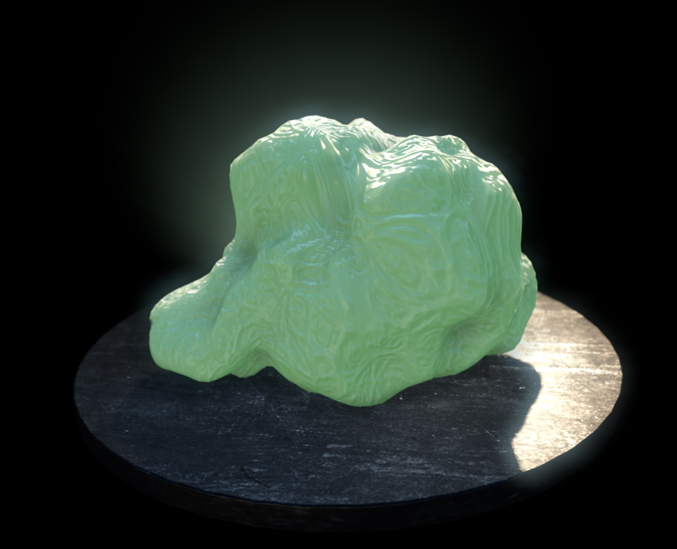
The word "radium" was widely used in the early to mid 1900s as a sort of designation of quality and brightness, based on its use in luminous paints. This boot polish never had any radium in it, of that you can be 99% sure. See that sample for more details for what a Revigator is and why it's listed under radium. This is a smaller model of Revigator, but more complete than my other model (also listed under radium). The radioactivity will stay for thousands of years.) (When new the hands would have glowed too brightly to see individual flashes, but over time the phosphors in these clocks degrades. Although I have not tried this, the seller claims that if you look at the hands with a magnifying glass in a dark room you can see individual flashes of light, which says more about how decayed the phosphors are than about the amount of radioactivity.

This clock has an unusually large amount of radium paint on its numerals and hands, making it more radioactive than the average antique luminous hand clock. I paid a lot for this book, which is almost impossible to find, because while it's not radioactive, it is a a wonderful artifact from an era where that would have been considered a problem along the lines of false advertising, while giving a child a radioactive book to read would have seemed perfectly normal. The Radium Book is something I've been trying to acquire for a long time, if only to confirm once and for all that it doesn't actually contain any radium (which would have been far too expensive to use in a book like this). This antique watch is still quite radioactive, and will stay that way for thousands of years.Ĭlick here to buy a book, photographic periodic table poster, card deck, or 3D print based on the images you see here! Radium was widely used in self-luminous clock and watch hands, until too many watch factory workers had died of it. Harding presented her with a gram of radium.Pictures, stories, and facts about the element Radium in the Periodic Table H In 1921, she visited the United States, and President Warren G.

Beginning in 1918, the Radium Institute at the University of Paris began to operate under Curie’s direction and from its inception was a major center for chemistry and nuclear physics. She became interested in the medical applications of radioactive substances, working on radiology during World War I and the potential of radium as a cancer therapy. For this achievement, she was the sole recipient of the 1911 Nobel Prize in chemistry, making her the first person to win a second Nobel Prize. In 1910, with Debierne, she finally succeeded in isolating pure, metallic radium. Although devastated, Marie Curie vowed to continue her work and in May 1906 was appointed to her husband’s seat at the Sorbonne, thus becoming the university’s first female professor. On April 19, 1906, Pierre Curie was killed in an accident in the Paris streets.

Pierre Curie was appointed to the chair of physics at the Sorbonne in 1904, and Marie continued her efforts to isolate pure, non-chloride radium. She was the first woman to win a Nobel Prize. On the results of this research, she was awarded her doctorate of science in June 1903 and later in the year shared the Nobel Prize in physics with her husband and Becquerel. Unlike uranium and polonium, radium does not occur freely in nature, and Marie and her assistant Andre Debierne laboriously refined several tons of pitchblende in order to isolate one-tenth gram of pure radium chloride in 1902. While Pierre investigated the physical properties of the new elements, Marie worked to chemically isolate radium from pitchblende.


 0 kommentar(er)
0 kommentar(er)
